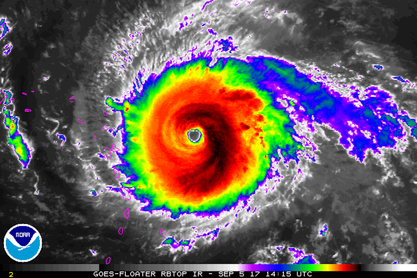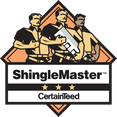|
Hurricane Irma has reached winds of over 175 mph, well above the 157 mph threshold for Category 5. This storm has been called "potentially catastrophic" with storm surges of 7 to 11 feet and very, very heavy flooding rainfall.
Your roof is the highest structural component of your home and the first line of defense in a hurricane. It can take the brunt of the high winds, driving rain and debris from winds in excess of 155 mph. A Category 1 or 2 may tear off shingles, tires or portions of flash, damage the gutters and cause a leak. A Category 3 or 4 may cause extensive damage to the roof, decking and gable ends from wind and blown debris. A Category 5 can cause massive roof damage from the wind, rain, and debris. Safeguarding your roof before a hurricane hits may help you avoid major damage and costly repairs. One way to do this is to have your roof inspected regularly. A qualified inspector can find leaks or weak areas on the roof which can be repaired before a major storm arrives. Hurricane season runs from August through November. The best time for preventative care on your roof is before hurricane season in order to beat the rush for roofing contractors' help for maintenance at a reasonable cost. They can retrofit your roof and fortify it against rain, wind, hail and other damage from hurricanes. This can cost between $40 and $80 per hour. Hurricane straps or tie-downs as they are sometimes called, can ensure that your roof is bolted to the rest of your house. Roofing cement will prevent loose tiles from becoming projectiles during a store and damaging the underlying roofing material. Areas where wires enter the home should be sealed to minimize water damage during heavy wind and rain. Falling trees are one of the biggest hazards during a hurricane. Having a tree service professional trim or chop down a tree before a hurricane will minimize damage. Check for dead sections on your trees or hanging limbs which can damage your home or your neighbor's home. Make sure your drains, scuppers, and gutters are clear to handle heavy downpours. Finally, check your homeowner's insurance to make sure it is up to date and will cover roofing expenses. Repairing a roof after a hurricane can be costly. the average cost to handle a roof repair after a hurricane is $650. Consider setting up an appointment with a roofing contractor before the hurricane hits to come and inspect your roof and do repairs after the hurricane is gone. The roofing contractor can make sure ahead of time that your insurance will cover your repairs. Joye Roofing offers a free roof inspection. They will work with your insurance company to make sure the repairs are completed as soon as possible. Check out our 5 star rating on Google My Business and Facebook. If you found this information helpful please press the "Like" button below, or "Share" it with your friends and family! Resources: markkaufmanroofing.com floridaroofing.com onesourcecps.com
Comments are closed.
|
AuthorDerek Joye has been roofing homes and businesses in the Midlands for over 20 years. Archives
June 2020
Categories
All
|
||||||||||||


 RSS Feed
RSS Feed



